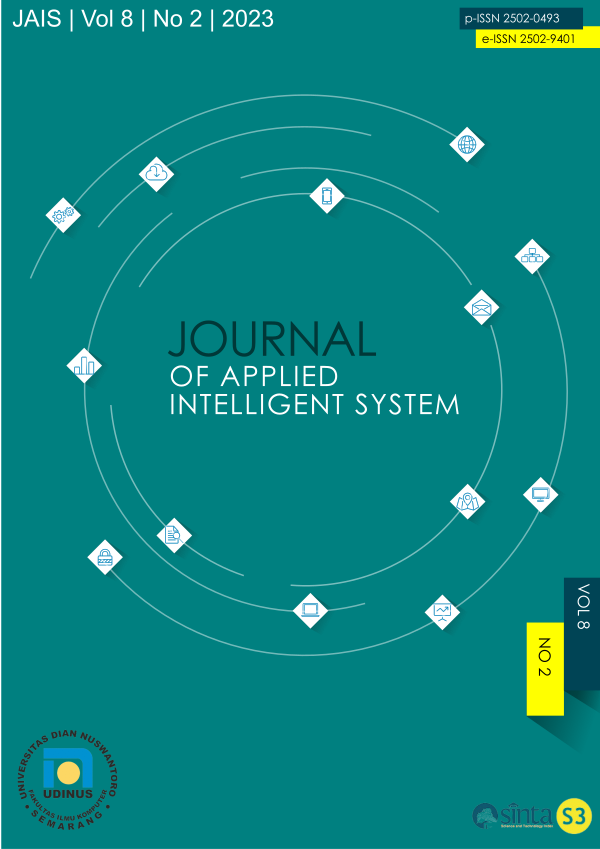Poverty Modeling in East Java Province Using the Spatial Seemingly Unrelated Regression (Sur) Method
DOI:
https://doi.org/10.33633/jais.v8i2.8178Abstract
Poverty is a complex problem because it relates to various aspects of human life. In Indonesia, there is one province that has a very high percentage of poverty, namely East Java Province. Although from year to year the poverty rate has decreased, when viewed from the national level it is still very far from the government's expectations of reducing the poverty rate. Cases of poverty can be modeled by Econometrics. Econometric models are often applied to problems involving one or more related equations. One method that can be used to solve several interrelated equations because there is a correlation error regression between one another, namely Seemingly Unrelated Regression which is usually abbreviated as SUR, in this case Spatial Seemingly Unrelated Regression (SUR-Spatial) is development that takes into account the spatial influence between locations. From the results of tests conducted in the SUR-Spatial Lagrange Multiplier model, the poverty data generated by the East Java Province is the SUR-Spatial Autoregressive Model (SUR-SAR). So with the SUR-SAR model it can be seen that the variable that has a significant effect on the percentage of poor people is the growth rate of Gross Regional Domestic Product based on the constant price of the minimum wage for each district, as well as the average length of school years. Meanwhile, the Poverty Depth Index has an effect because of the growth rate of Gross Regional Domestic Product on the basis of constant prices and the average length of schooling. The Poverty Severity Index is influenced by the growth rate of Gross Regional Domestic Product at constant prices and average years of schooling.References
Anselin, L. (1988), A Test for Spatial Autocorrelation in Seemingly Regression. Economics Letters. p. 335 - 341. Vol.28.
Anuraga, G. (2014). Spatial Structural Equation Modeling-Partial Least Square to model poverty in East Java. thesis. Surabaya: Sepuluh Nopember Institute of Technology.
Arisanti, R. (2011). Spatial Regression Model for Detection of Poverty Factors in East Java Province. thesis. Bogor Agricultural Institute. Bogor.
Arunavega, A. (2014). "Fiscal Policy Economic Analysis: Spatial Seemingly Unrelated Regression for Modeling Government Expenditures in East Java. Thesis. Surabaya: Sepuluh Nopember Institute of Technology.
Chambers, R. (1996). London, "Rural Development: Putting the Last First, Longman Group Limited". Enggland
Dagderivian, H., Van Der Hoeven, R., dan Weeks, J., (2002), “Redistribution Does Matter: Growth and Redistribution for Poverty Reduction”, Discussion Paper of United Nations University/WIDER, No. 5.
Dermawan, D.A., (2014), Spatial Seemingly Unrelated Regression (SUR) for Modeling GRDP of Traffic Accidents in Tuban Regency, Thesis, Surabaya: Sepuluh Nopember Institute of Technology.
Mur, J. and, F. Lopez. (2009). “Testing for spatial effects in Seemingly Unrelated Regression”. Paper.
Pristiandana, A. (2012). "Seemingly Unrelated Regression (SUR) Spatial for Modeling the Leading Sector GRDP in East Java". thesis. Surabaya: Sepuluh Nopember Institute of Technology.
Downloads
Published
Issue
Section
License
- Authors retain copyright and grant the journal right of first publication with the work simultaneously licensed under a Creative Commons Attribution License that allows others to share the work with an acknowledgment of the work's authorship and initial publication in this journal.
- Authors are able to enter into separate, additional contractual arrangements for the non-exclusive distribution of the journal's published version of the work (e.g., post it to an institutional repository or publish it in a book), with an acknowledgment of its initial publication in this journal.
- Authors are permitted and encouraged to post their work online (e.g., in institutional repositories or on their website) prior to and during the submission process, as it can lead to productive exchanges, as well as earlier and greater citation of published work (See The Effect of Open Access).









